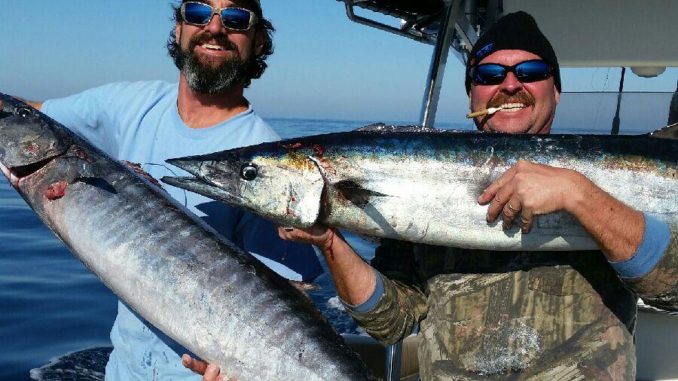
Trolling at the right speed is the key
Anglers looking for a true winter battle will know that a forecast of calm seas and an ocean-worthy boat with plenty of fuel can bring big rewards out of Murrells Inlet, S.C., this time of year.
As nearshore waters cool to seasonal lows, the warm Gulf Stream waters create a perfect meeting place for the year’s biggest wahoo. And the best way to cover the most real estate and put the most fish in the boat is behind a speeding boat with heavy lines in its wake.
Jay Sconyers of Aces Up Fishing Charters said winter brings some of his best wahoo numbers and some huge fish.
“Winter is the best time to catch the big ones,” said Sconyers (843-997-3270). “From January through March, we catch a lot between 80 and 100 pounds.”
Winter confines wahoo to smaller area
Even though wahoo are available off the South Carolina coast all year, winter conditions push them to a more-confined area.
“In the summer, all of the water is 80 degrees, and there is nothing to really concentrate them. But in winter, the 78- to 80-degree Gulf Stream water comes in and meets the cold water. If you can find the warm water along the break, you can smoke them,” he said.
The “break” Sconyers refers to is the edge of the continental shelf; he prefers the water depths around 180 feet. These areas have the most structure that holds plenty of bait.
Higher speed can land more fish
Most anglers troll rigged-ballyhoo at 5 knots, and Sconyers has been trolling for wahoo at that speed for nearly two decades. But in recent years, he has shifted gears somewhat to high-speed trolling by using heavier gear and running from 12 to 13 knots.
“We cover a lot of area quickly, and we have noticed the fish sometimes will hit a high-speed lure more than the slow-trolled lure. But wahoo are finicky, and it can be the other way around,” he said.
Sconyers is adopting high-speed trolling techniques more and more. He can present his lures in many more places in a shorter amount of time. But it does come with setbacks.
“I normally troll eight lines at the same time. With high-speed trolling, I can only use three to four rods. It is a trade-off, but if the fish are around, they can find one of three lures just as good as eight,” he said.
Sconyers uses a collection of trolling weights between 20 to 48 ounces. He sets baits and lures behind the boat at different distances to prevent the lines from tangling. He also uses pre-weighted lures to keep them in the water when at high speeds.


Be the first to comment